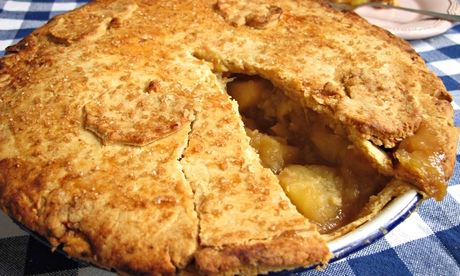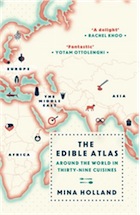Fancy a bite of pajata or soondae? Sam Leith tucks in to Mina Holland's companionable guide to global gastronomy

'May all your pies be deep and nuanced'. Photograph: Felicity Cloake for the Guardian
Here is a nice idea for a cookery book, amiably executed and attractively plated up. Mina Holland has produced what you'd hesitate to call a whistle-stop tour – perhaps the metaphor should be a dim sum or tapas-style feast – of a number of the world's different cuisines. She is interested in how these styles of cooking draw on local ingredients and traditions, they way they sit in the culture and, above all, the way in which they have cross-fertilised with other food cultures. "Food typifies everything that is different about another culture and gives the most authentic insight into how people live," she writes on the first page of her introduction, which is a bit of an overstatement but gives a flavour of the project.
Necessarily, depth is sacrificed for breadth. But breadth has its advantages. The text is interspersed with cute graphics – charts, tables, maps – that allow you to compare and contrast: a table showing, say, the different ingredients that go into the mirepoix or sofrito of various cooking cultures; a simplified map of the spice routes; a table of different chillis; a graphic of the Americas showing how influences (and ingredients) poured in from all sides like troops advancing on a battlefield map.
Her regions are Europe, the Middle East, Asia, Africa and the Americas. No prawns on the barbie, then. Europe gets the most attention: she looks at four cuisines for each of France (Normandy, Loire Valley, Lyon and Provence) and Spain (Catalonia, northern Spain, central Spain and Andalucia) and five for Italy (Lazio, Emilia-Romagna, Calabria, Sicily, Veneto). China is represented by only Cantonese and Sichuanese cooking, and the whole of Africa gets only three: Ethiopia, west Africa and Morocco (which overlaps a bit with the Middle East in any case). Still, it's unreasonable to expect this book to be able to offer much more than what its author endearingly describes as "a scant slice of a deep and nuanced pie".
More
Her regions are Europe, the Middle East, Asia, Africa and the Americas. No prawns on the barbie, then. Europe gets the most attention: she looks at four cuisines for each of France (Normandy, Loire Valley, Lyon and Provence) and Spain (Catalonia, northern Spain, central Spain and Andalucia) and five for Italy (Lazio, Emilia-Romagna, Calabria, Sicily, Veneto). China is represented by only Cantonese and Sichuanese cooking, and the whole of Africa gets only three: Ethiopia, west Africa and Morocco (which overlaps a bit with the Middle East in any case). Still, it's unreasonable to expect this book to be able to offer much more than what its author endearingly describes as "a scant slice of a deep and nuanced pie".
More


No comments:
Post a Comment